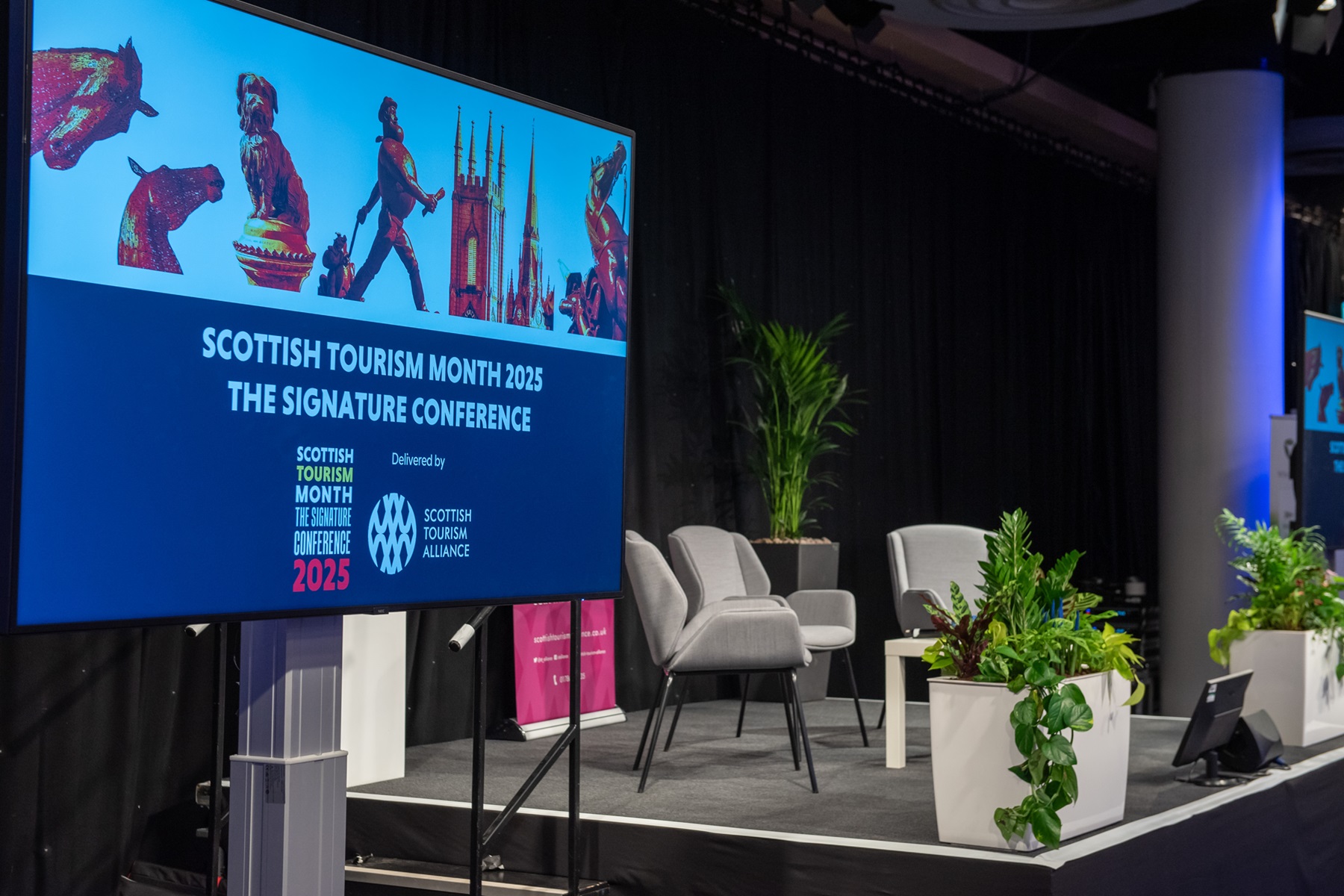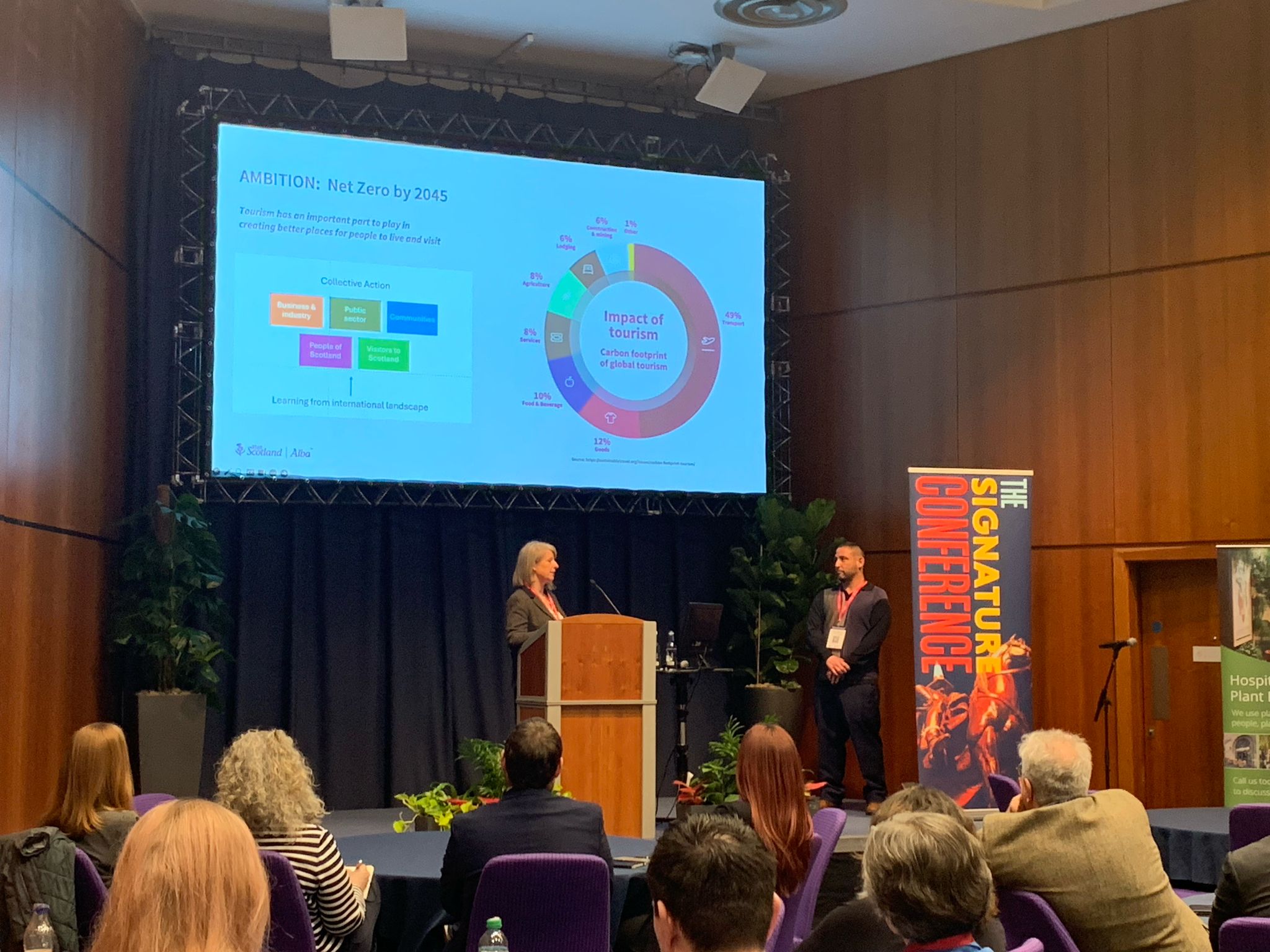The power of storytelling
One message that came up time and again across the day was the power of storytelling and the importance of shouting about tourism successes in Scotland.
Scotland’s destination brand is regarded highly on the global stage – Justin Reid from Trip Advisor highlighted how visitor attractions in Scotland outperform other major destinations in Trip Advisor reviews and ratings from UK and US markets.
But in order to ensure regional and seasonal spread of visitors, and to continue to compete against other destinations, speakers had a clear call to action for industry - share your stories and shout about the brilliant products and experiences on offer to visitors.
In both of their sessions, Cat Leaver and Rob Dickson discussed how Scotland punches above its weight internationally as a world-class destination and shared some tips on how industry can shout more about their successes.
Cat shared how it's important for all – industry, government and media – to shift the narrative away from more negative talking points such as overtourism, a narrative that misrepresents localised visitor management challenges as a widespread national issue.
Through the sharing of new products and experiences and, through stories of hidden gems and off-the-beaten track destinations, we can help manage these local challenges in busier areas by spreading visitors out across the country to support and visit other local visitor economies.
Rob also highlighted how frequently our teams are uncovering fantastic tourism and events examples and reminded businesses that what they might see as their day-to-day work, can be a brilliant story to inspire visitors to add Scotland to their must-visit list. And as one speaker said, “Everything in tourism comes back to people.”

